Whether you’re revamping your breakfast nook, living room or entire home, creating a well designed home that uniquely reflects you begins with nailing down your interior design style. Knowing your style will guide you to the looks, products, and designer BFF best suited to your tastes.
This can be a daunting choice, especially since it involves style words you may not use on the regular (what’s the difference between Modern, Mid-Century Modern and Contemporary, anyways?). That’s where we come in. Go ahead and pour a cup of jo (or wine if it’s the happiest of hours), kick up your feet, and get your home design learning on.
This guide includes an overview of the most popular interior design styles and our Havenly designers who specialize in each. Also, for more personal and fun guidance, try taking the Havenly style quiz to discover whether you’re more into classic spaces, boho vibes, or… just take it and you’ll see.
Classic interior design is characterized by sophistication in the form of timeless design, elegant fabrics and quality materials.
Drawing inspiration from European influences, Classic spaces tend to feature more traditional furniture details like tufting, rolled arms, and scrolled wood. We often see neutral palettes in ivory and beige, with perhaps a touch of soft gray or blue, in our Classic designs.
Because Classic floor plans are all about balance and symmetry, a well-designed Classic space is harmonious and relaxing.
Think of it this way: If Classic were a Sex and the City character, it would be Charlotte.
If you’re Classically inclined, these interior designers could be your faves.
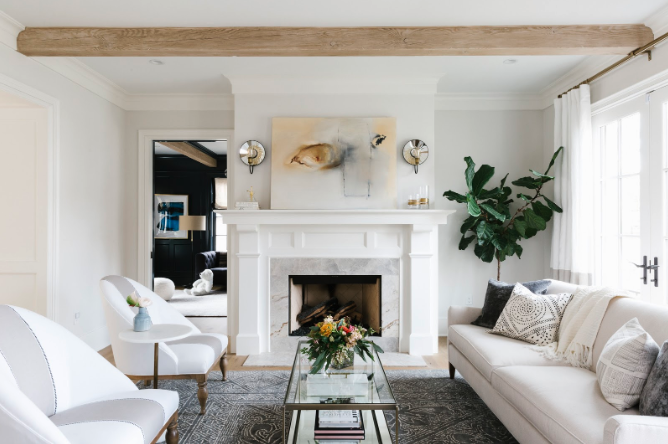
Transitional interior design serves as a stepping stone between Classic and Contemporary, marrying the sophistication of the former with the simplicity of the latter.
Blending old and new, Transitional features simple lines, timeless pieces, and generally leans into a netural and relaxed color palette. Exhibiting the art of restraint, this design style leans into purposeful statement pieces while keeping accessories to a minimum.
With a Transitional space, you can expect elevated pieces to balance with casual textures – a traditional chandelier paired with a reclaimed wood dining table or tufted velvet headboard layered with a relaxed linen duvet.
Think of it this way: If Transitional were in high school, it would get along with everyone.
To transition your space to Transitional, explore these interior designers.
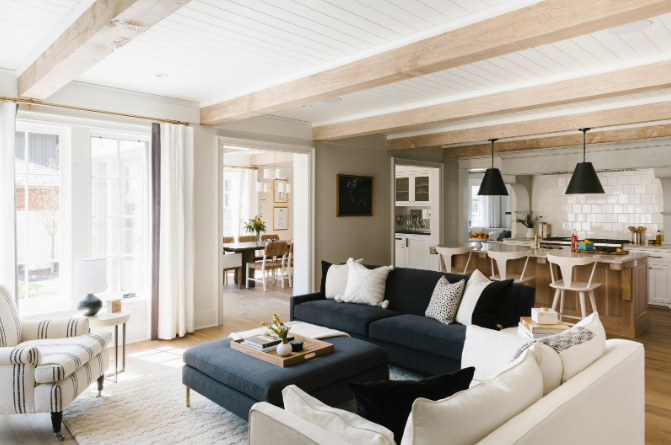
Modern interior design prioritizes function over form, and prefers a clutter-free environment to one accessorized to the nines.
Modern style embraces simplicity in every way—including furniture. You’ll find uncluttered spaces, clean lines, and sleek silhouettes. Incorporating textures like glass, iron, and steel, what these spaces lack in warmth they make up for in statement affect.
Think of it this way: If Modern interior design were a vacuum, it would be a Dyson.
Does Modern sound tailor-made for your home? We’ve got the interior designer for you.
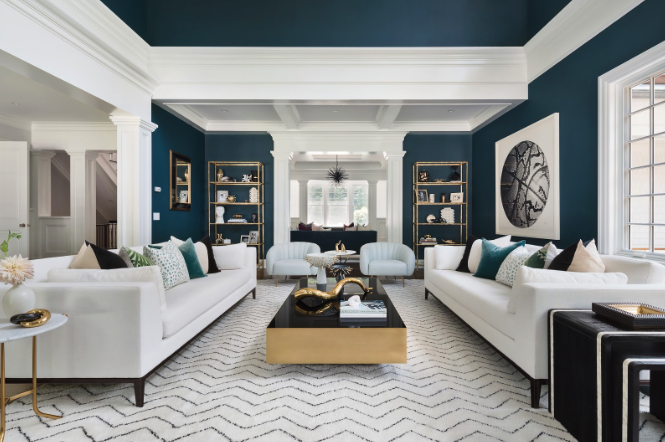
Mid-Century Modern interior design is one of the most popular styles and one of the easiest to recognize. If it looks like a set from “Mad Men,” it’s Mid-Century Modern, where minimalist silhouettes meet wood textures (especially those spindle legs) and pops of vibrant color.
Mid-Century Modern furniture is comfortable, fun and accessible—in part thanks to brands like West Elm. Who hasn’t lusted after one of their iconic Mid-Century sofas?
If you’re lucky, your parents or grandparents decorated in this style, and you could benefit from a boomerang table or Eames chair that they no longer need.
Think of it this way: If Mid-Century Modern were a cocktail, it would be an Old-Fashioned (Don Draper’s usual).
Craving the look of Mid-Century Modern? These interior designers are, too.

Minimal interior design grew out of Modern. It’s the perfect, stripped-down style for people who hate clutter, love clean surfaces and binge “Tidying Up” with Marie Kondo.
Minimalism sparks joy through simplicity. A pared-down aesthetic. Simplicity that favors funtion over form. A limited palette of neutral, muted colors.
It’s a smart choice for apartment dwellers, renters and homeowners with limited storage, or those who share their space with a neat freak (or simply find calm in an efficient, clutter-free environment).
Think of it this way: If Minimal interior design were a wardrobe staple, it would be a crisp, white, tailored shirt.
Love the sparse stylings of Minimalism? We’ve got the interior designer for you.
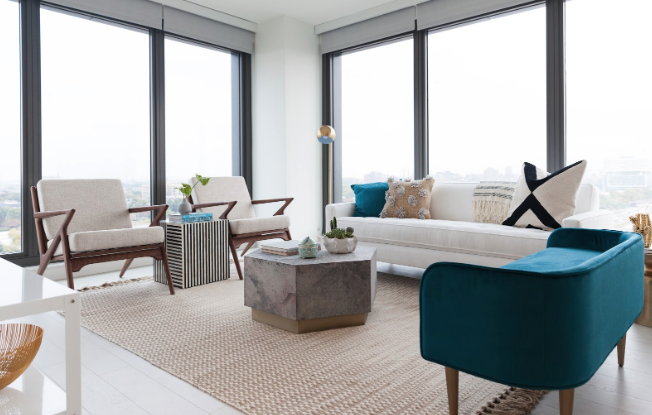
Contemporary interior design has its roots in the 1970s, but as times have changed, so has what it means to be Contemporary.
In the world of interior design, Contemporary refers to whatever look is most of-the-moment. It includes on-trend styles, from pattern to silhouettes to palettes. Often we see Contemporary designs with bold colors and forms.
Our design experts say trends for 2020 include breaking long-established design rules, arranging furniture to encourage conversations, and investing in pieces that are highly functional, such as large sectionals in performance fabrics.
Think of it this way: If Contemporary were a recording artist, it would be Billie Eilish.
If you’re ready to get started on a Contemporary space, we’ve got interior designers standing by.

Coastal interior design is inherently relaxing—it cues the rhythmic sound of waves at the beach and mojitos in adirondack chairs on the back porch.
Natural textures like linen, jute and wood wear well, and all those easy, breezy whites, neutrals and blues look perpetually shipshape. Upscale sea-inspired décor like large, beautiful conch shells, pieces of coral and vases of sea glass are a must.
Coastal design works well for people who live on or near the water and want a home as relaxed as their lifestyle. But, if you’re committed to pursuing a coastal vibe in landlocked Kansas, the world is your oyster, too.
Think of it this way: If Coastal were a quote, it would be these words from E.E. Cummings, “For whatever we lose (like a you or a me), it’s always ourselves we find in the sea.”
If Coastal design is calling your name, we’ve got interior designer ready to meet you.
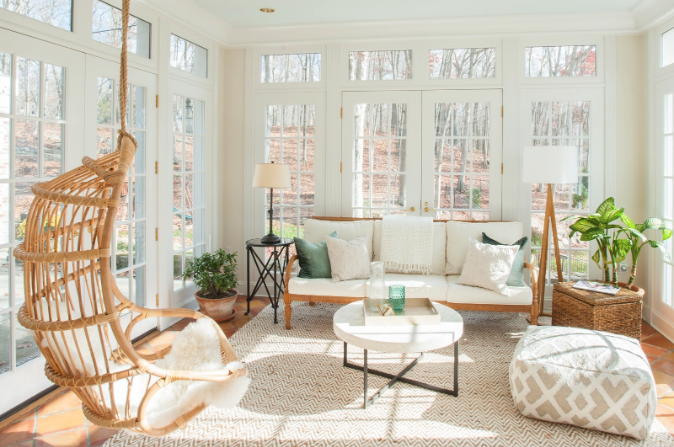
Preppy interior design is a little bit country club, a little bit coastal, and a whole lot of fun.
The first cue to a preppy space is the color palette: saturated with vibrant colors like navy, green and pink (beach hats off to you, Lilly Pulitzer). Patterns tend towards the classics, like your quintessential stripes, polka dots, plaid, and a touch of floral.
An inherently playful design style, preppy spaces are welcoming and inviting. They say: let’s chat over a Sea Breeze.
Think of it this way: If preppy were an iconic purse, it would be Kate Spade.
Would Preppy design put pep in your step? Say hello to these interior designers.
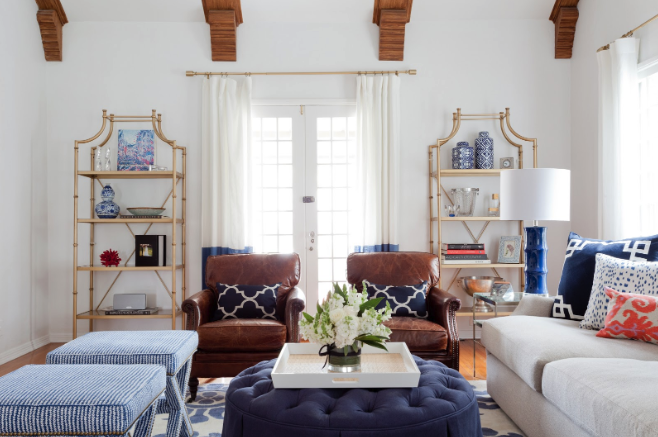
Glam interior design is for maximilists who would relish relaxing on a tufted chaise lounge (glass of bubbles in hand) with a Diptyque candle (or three) burning.
Think luxe fabrics and ornate, sculptural elements alongside sleek, contemporary lines. Bold patterns (yes you, animal prints) and rich color accents are juxtaposed with simple modern elements.
This style mixes old and new in an eye-catching way. Walking into a glam space might remind you of Old Hollywood drama, in the best way possible.
Think of it this way: If Glam were a cupcake, it would be filled with salted caramel, frosted with rich buttercream and covered in gold sprinkles.
Ready to go Glam? So are these interior designers, dahling.
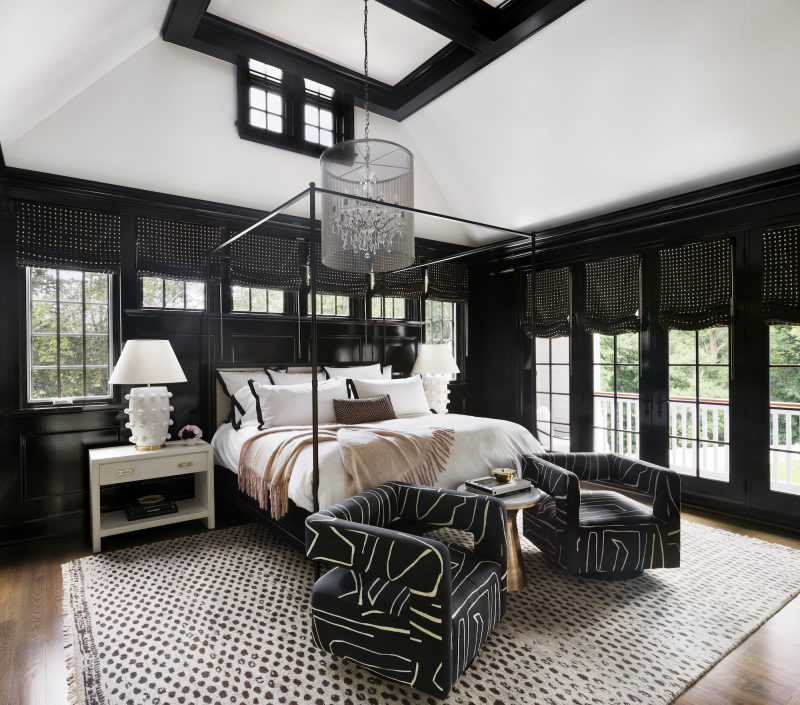
Born, of course, in countries where the winters are long and dark, Scandinavian design is defined by hygge vibes: all the coziness, all the time.
Colors are always neutral, lines are clean, accents are simple, and there’s no shame in the Scandinavian game of empty spaces or bare walls.
But that’s not to say these spaces aren’t filled with warmth and comfort. Sheepskin rugs and thick knits add texture. Greenery adds a pop of color. Twinkly lights and candles add life.
Think of it this way: If Scandinavian were a big box store, it would serve Swedish meatballs.
Scandinavian feel like you? These interior designers speak its language.

Farmhouse interior design is as cozy as an heirloom quilt and as comforting as a homemade chicken pot pie.
Once upon a time, Farmhouse design was marked by the practicality practicality of a family that worked the land. Today, this style is more refined with a modern edge, and it works just as well for city and urban life.
Gone are the days of gingham tablecloths and braided oval rugs. You know a farmhouse space by a neutral color palette built on earthy shades of greens or browns. Simple, distressed wooden furniture is balanced with plush, inviting sofas. Industrial-inspired accents, like galvanized metal storage buckets and industrial cage light fixtures, balance with relaxed canvas and jute textiles.
Think of it this way: If Farmhouse were an HGTV host, it would be Joanna Gaines.
Feeling that Farmhouse vibe? These designers got it.

Industrial interior design takes its cues from old factories and other industrial spaces that have been converted to lofts, creative offices or coffee houses. That translates to the use of metals like steel and iron, utilitarian objects, and a muted palette that mixes neutrals, blacks and warm tones.
Industrial style is all about exposure, whether it’s the exposed brick or stone of walls, the exposed pipes and ductwork of ceilings, or the steel steps and banister of a staircase.
Other typical Industrial touchpoints include stainless steel surfaces, metal light fixtures and industrial lamps, vintage filing cabinets and decor that harkens back to a new age of machinery.
Think of it this way: If Industrial were a business magnate, it would be Henry Ford.
Digging the Industrial style? These designers have a pulse on Industrial design.
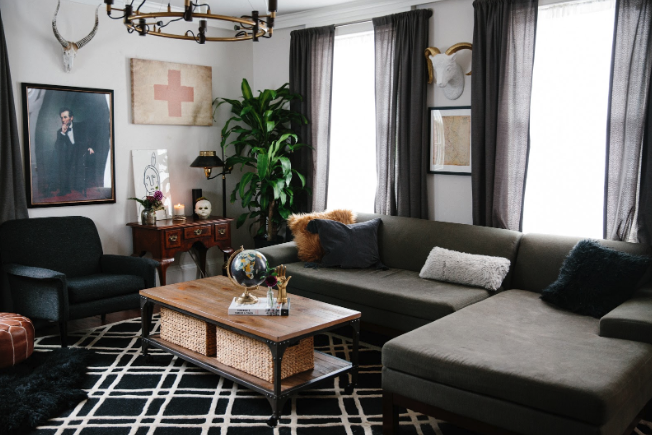
Rustic interior design is raw, rugged and casual. It’s an Ansel Adams’ photograph or the sound of Sam Elliott’s deep, gravelly voice.
Inspired by life outdoors, Rustic style leans toward earth tones, organic materials like reclaimed wood and unfinished stone, and furniture that’s upholstered in leather or canvas.
Faux animal hides and found objects lend drama and character to a Rustic interior, which typically features oversized furniture, woven textiles and the occasional buffalo plaid.
Think of it this way: If Rustic were a national park, it would be Yosemite.
Ready to settle into Rustic? These designers are ready to help.
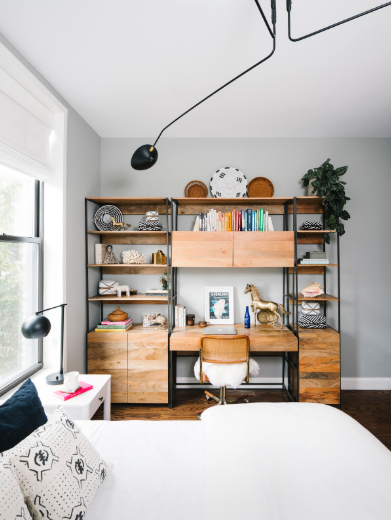
Eclectic interior design is for people who are allergic to matchy-matchy. Who are energized by a diverse collection of items that feels like it’s been acquired over time. Who long to step into a space that’s as individual as they are.
At first glance, Eclectic design may look like it’s been casually tossed together. But seasoned designers know how to seamlessly blend the disparate elements of Eclectic style through color or pattern, texture or shape. It’s an intentional style choice that only looks unintentional.
Eclectic celebrates unexpected contrast, between old and new, periods and styles, the handmade and the manufactured.
Think of it this way: If Eclectic were a boutique, it would sell vintage clothing from a variety of decades.
Ready to join the Eclectic company? These designers can welcome you to the fold.
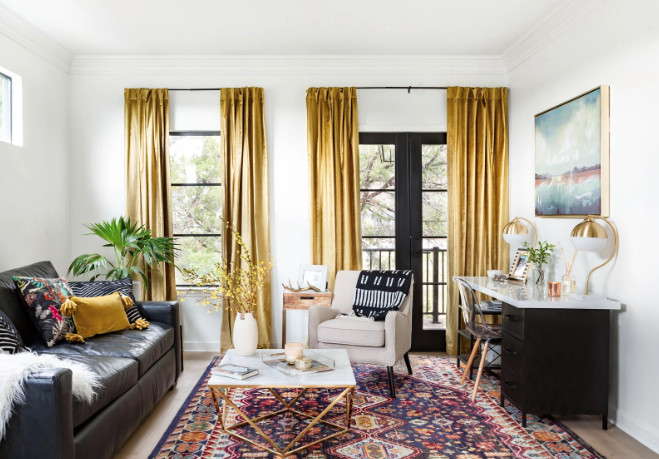
Bohemian interior design is free-spirited. It lets it all hang out—in hanging chairs, sink-into-the-cushions sofas, vintage chaise lounges or thrifted butterfly chairs.
Natural materials like rattan and sisal provide a neutral background for Bohemian’s riot of patterns and global influences and textures (the more, the better).
And if everything in a Bohemian space has a “lived in” look, that’s all for the better. Bohemian does not stand on ceremony. It’s embraceable and inviting.
Think of it this way: If Bohemian were a Queen song, well, you know which one it would be (the one that contains different musical genres and vocal styles, naturally).
When you’re ready to go boho, we’ve got interior designers for you.
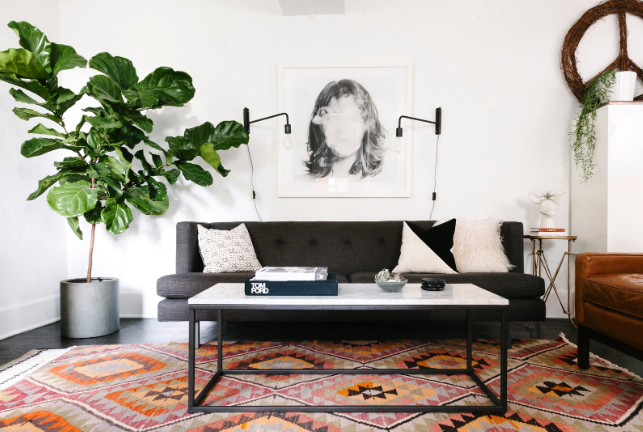
Global interior design is characterized by its mix of cultural touchstones. So even if your passport is less than full, you can design a space that looks like it’s home base to a world-traveling collector.
A globally inspired space is a swirl of color, pattern and texture. Quintessential pieces include Moroccan poufs, African mud cloth fabrics, souk rugs and Turkish pillows.
The thread that ties all these diverse conversation pieces together is your unique taste and perspective.
Think of it this way: If Global were an international sporting event, it would be the Olympics.
Ready to embark on your Global journey? Let these interior designers serve as your scout.
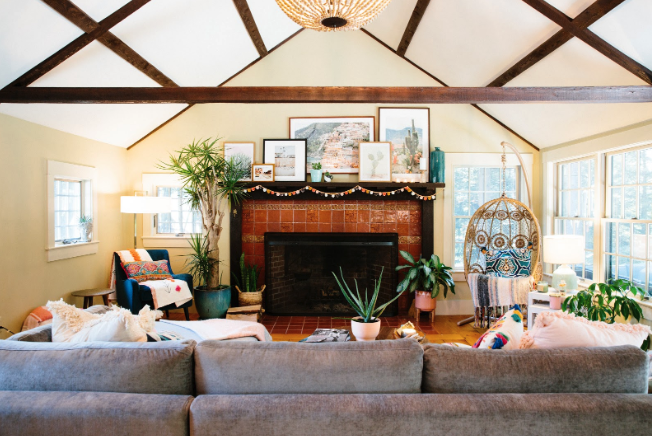
Take Havenly’s style quiz, choose the rooms that make you swoon, and we’ll pinpoint your perfect interior design style.

